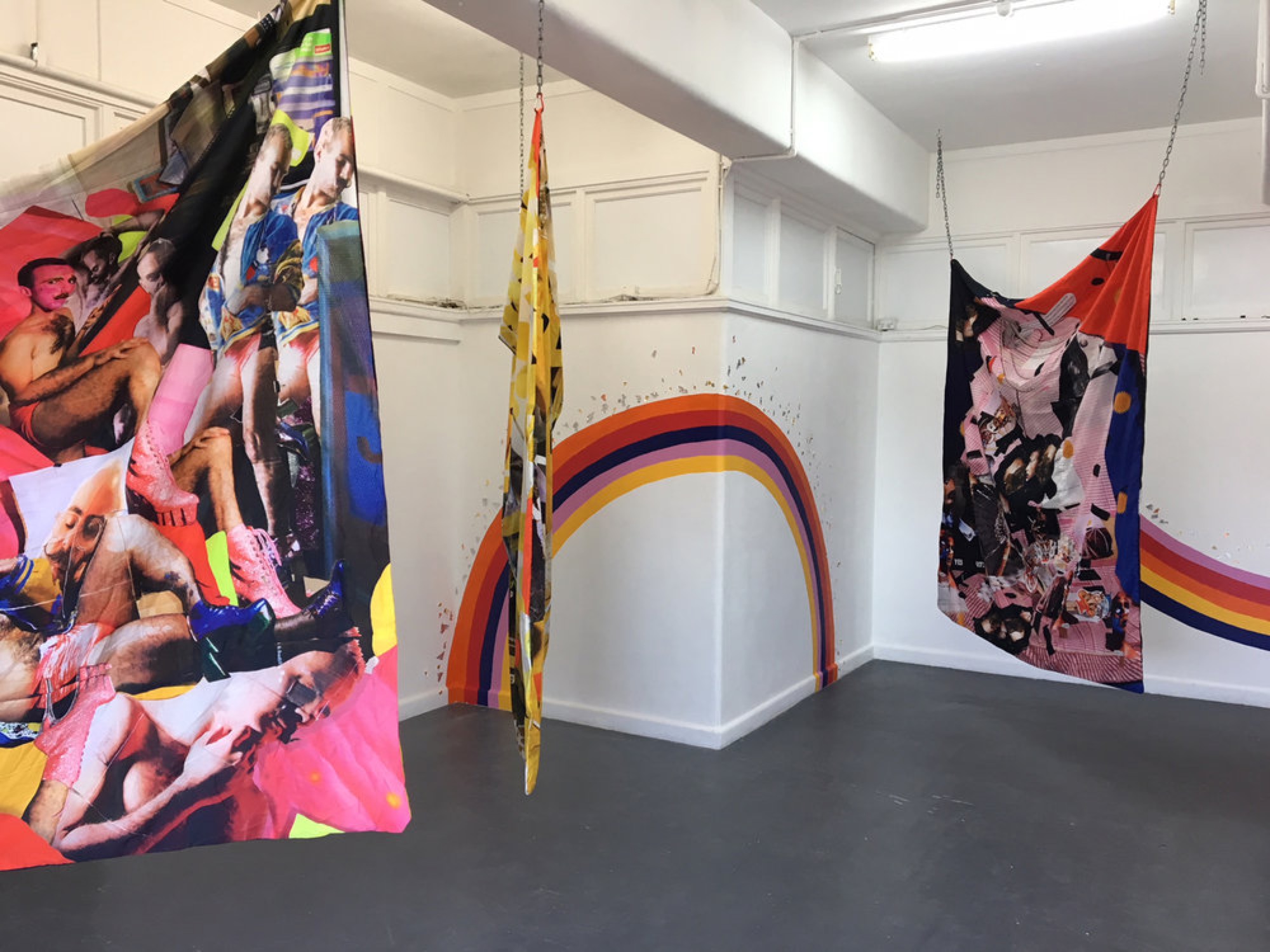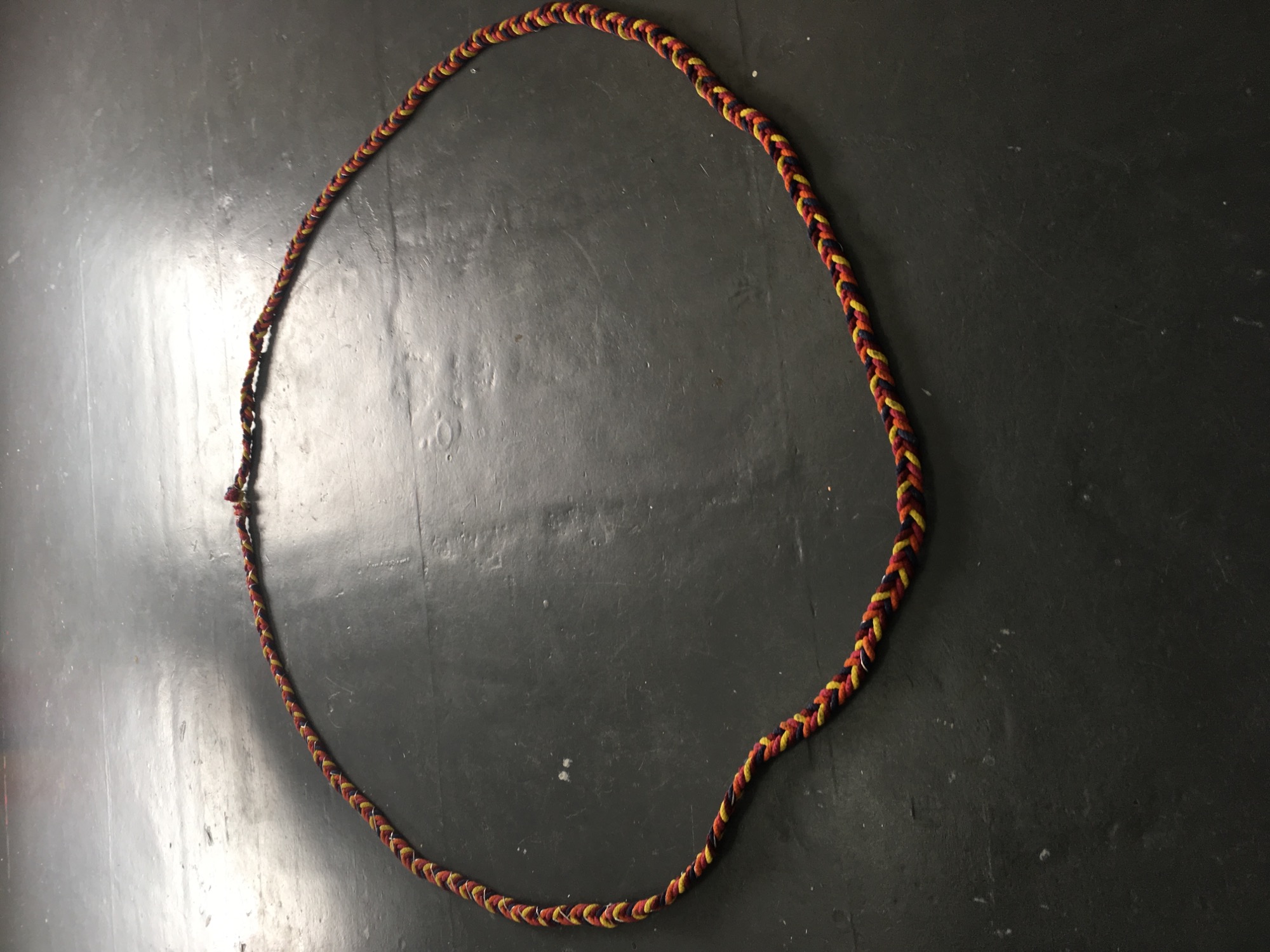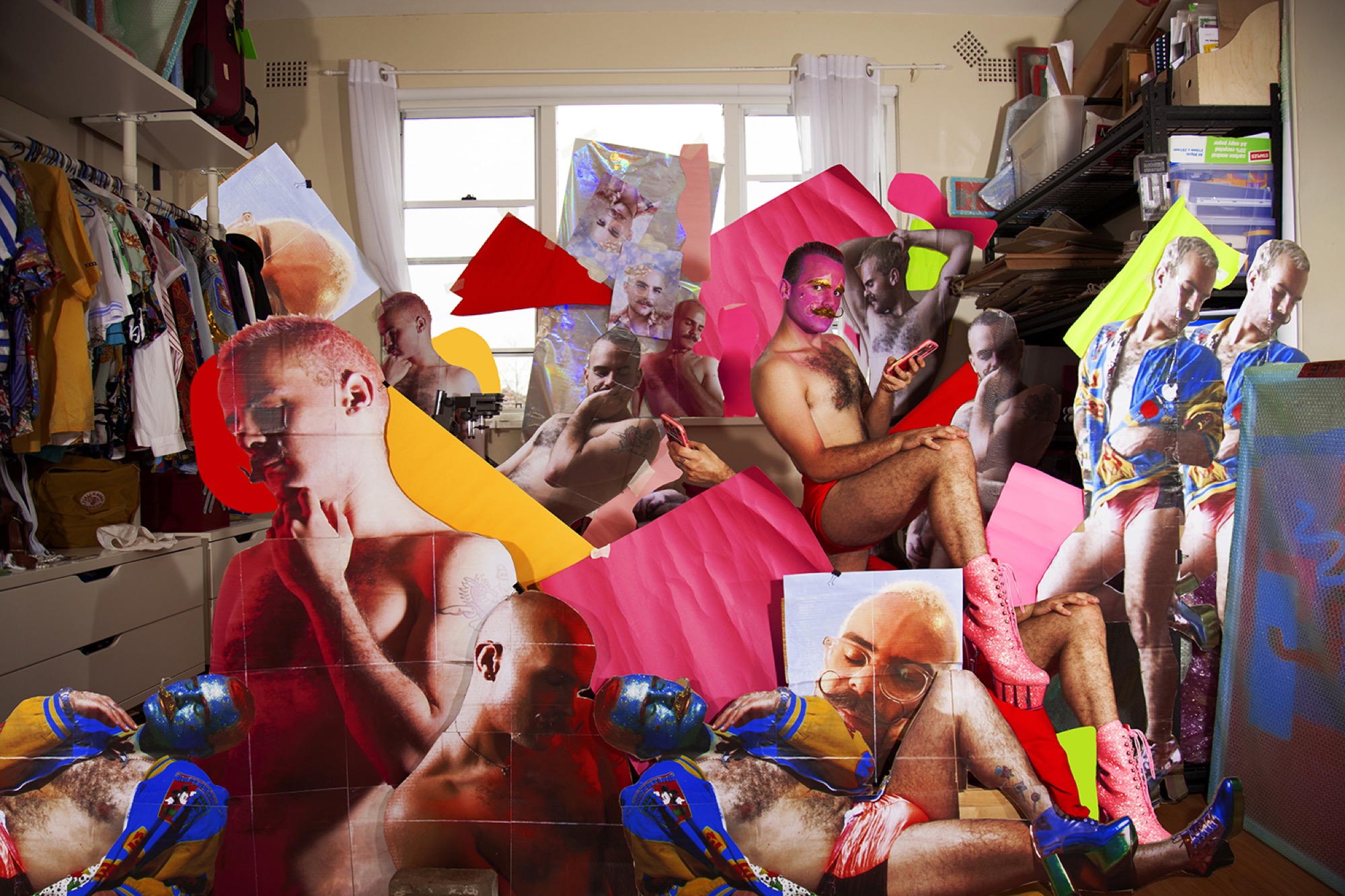Kieran Butler and collaborators: Rainbow Bois and Magical Gurls
Amelia Winata
A few years ago there was a quasi-theoretical attempt at naming a new cultural epoch to be called “metamodernism.” The term was coined by Dutch philosophers Robin van den Akker and Timotheus Vermeulen who, in a video produced by Frieze, oozed effortless Scandinavian cool (search YouTube: “what is metamodernism”). Metamodernism, they explained, is a way of labelling a cultural mood that has followed postmodernism. They argue this mood is characterised by a tension or binary between sincerity (modernist optimism, idealism, positivity, desire) and irony (postmodernist pessimism, scepticism, humour, resignation); a binary Akker and Vermeulen find in the films of Wes Anderson or the books of David Foster Wallace. This theory aged quickly and there was, anyway, a sense of wank associated with the line of thought that probably contributed to its rapid jettison from intellectual consciousness. But, despite this, I often come back to the video of those two Dutch philosophers strolling along Amsterdam’s canals smoking cigarettes, and think that just maybe there really is a grain of truth in what they were saying.
I was reminded of metamodernism when I visited Kieren Butler’s exhibition Rainbow Boys and Magical Gurls at Blindside. Butler’s references—social media, self-performance etc.— were also hot topics in 2014 when a symposium about metamodernism took place amidst the ‘post-internet’ excitement. In collaboration with Samuel Beatty, Sabella D’Souza, Dileepa Dayananda, Emma Size and Matthew Varnay, Butler offers irony and joy in equal measure. Images of the artists as various incarnations of themselves, be it from their Instagram feeds or photographed by others, saturate the exhibition in an effort to address the topic of LGBTQIA+ identity.

All participating artists, writes Butler are ‘gender non-conforming people’. Rainbow Bois and Magical Gurls has been produced as part of the annual Midsumma, the self-proclaimed ‘LGBTQIA+ cultural festival,’ and the exhibition takes place in a wider program of works that are redefining the festival as more than just representative of artists confined under the narrow category “homosexual”, as it has been in years gone past. Blak Queer Futurism at all First Nations gallery Blak Dot and Black Magic at the Incinerator and curated by Maddee Clarke have, alongside Rainbow Bois and Magical Gurls, brought a much needed discussion of intersectionality to the table. In fact, Butler has taken pains to emphasise intersectionality in their own exhibition, listing their Mauritian heritage in their biography.
Rainbow Bois and Magical Gurls is installed in Blindside’s main gallery space. Five doona covers printed with bright, geometric collages of photos from Instagram feeds, photo shoots or stock imagery (each a collaboration with a different artist) are strung from the ceiling of the space. In the centre of these five pieces, a circle of multi-coloured, braided rope has been placed on the floor on which Butler performed a one-off performance with members of the audience (Magic circle markings, 2018). Participants listened to music on a single set of headphones while Butler dances silently alongside. A Polaroid photograph of the participants and Butler is suspended from the ceiling above. The final element of the exhibition is a series of rainbows painted on to the walls of the gallery that have been completed with gold and silver leaf. The effect of the rainbows is kitsch, to say the least; then again, this didn’t feel unintentional.

In an essay that accompanies the exhibition, Butler places a great deal of emphasis on the exhibitor’s interrogation of the history of photography, an assertion that I failed to grasp when viewing the works. Yes, photographs are rife, but, contrary to the artist’s claims, the exhibition makes no palpable statements about photography in its medium specificity. The doona covers, suspended with chains from the ceiling, have a soft sculptural quality about them and are, indeed, alluring as objects. Hung loosely, they slacken in the middle, contorting the imagery and subsequently drawing as much attention to the colours and patterns of the textiles as much as they do to the images themselves. An allusion to the bedroom is one that has been made by countless artists. Think Felix Gonzales or, closer to home, Hana Earles’ 2016 exhibition at Punk Café, My Major Retrospective, both of which drew on the motif of the bedroom to reference the intimate, the abject, the taboo. However, this trope is one that seems to stand the test of time because it offers a sense of vulnerability that taps into the viewer’s deep-seated desire to ‘get to know’ the artist. Simply because Butler has used photographs in their work does not mean that their work is about the history of photography. In fact, this dialogical emphasis upon the “medium” was ultimately distracting (as if the artist thought it necessary to justify the exhibition) and did a disservice to the exhibition.
Indeed, the emphasis upon collaboration speaks to the solidarity of LGBTQIA+ communities. Digital space as a survival strategy (everyone is orange), 2018, a collaborative doona cover with Sabella D’Souza is rife with the sincerity/irony binary that typifies metamodernism and that is, arguably, typical of Gen-Y. It is epitomised by the work’s major reference point, Instagram. Photographs of D’Souza performing self-representation through the filter of quasi-characters have been lifted directly from the artist’s Instagram. The photographs reference an online presence that can only be verified if the visitor visits D’Souza’s Instagram (gov.au). The works are pointers for things that exist outside of the gallery but also outside the physical realm. The artists rely on the fact that social media’s all pervasive presence means that viewers will recognise the familiar visual tropes of Instagram (the uniform framing of the photographs, the heart, comment and send symbols) and follow their noses to the source of these images.

Nobody can use the fact of the artists’ youth against them. In fact, it is a certain exuberance of youth that comes through in the energy of the works’ presentation. However, at times the exhibition teeters on derivation. For instance, one line of text present in Digital space as a survival strategy, ‘white people who use brown emojis to distance themselves from whiteness’ followed by two clapping emojis—one dark, one white and questions marks—smacks of a certain reductiveness that conversations about race sometimes suffer from. No doubt intersectionality is a crucial conversation to be had, but Rainbow Bois and Magical Girls does not convince me that these rehashed one-liners are the method through which to ask the audience to reflect.
Other doona covers included, such as And they, Sugar Boi, came from a day dream (gurl-boi-burl-goi) (2018) and The mystical third, the brown, femme (2018, in collaboration with Dileepa Dayananda) place a greater emphasis upon role play while also maintaining the same bright and patterned aesthetic of Butler and D’Souza’s collaboration. And they, Sugar Boi, features various images of Butler posing centrefold-style, in underwear, or with their face painted, exuding confidence and sensuality. The humour of the work comes from the fact that the images are collaged on top of a photograph of a walk in robe that is far from the glamour of the magazine centrefold: Ikea curtains and file holders share the space with clothes packed onto a single rail. While The mystical third, the brown, femme draws upon photomontage, layering photos of the artist with stock images to mimic the orientalisation of people of colour in art.

An erotic fan fiction written by Emma Size and available to gallery visitors is the best representation of the fluidity and complexities of gender and sexual binaries. Through a whacky and loose narrative of a lesbian who engages in hot sex with Gordon Ramsay (that eventually turns into a sexual encounter with Harry Potter’s Draco Malfoy), Size communicates a sense of frustration with gender and sexual binaries. Yet the story is not without derivation. Not unlike the hero of queer academia Maggie Nelson, Size has peppered a number of academic quotes throughout her narrative, pulling the audience’s attention back to the overarching theme within the story. Nelson is even referenced at some point in the piece, demonstrating how close in the mind of the writer she was. But the discomfort of feeling pressured to define one’s sexuality and identity is sad and heartfelt through the intense humour of the story line. Metamodern to the core.
Ultimately, the exhibition is an optimistic antidote to the very real struggles of the LGBTQIA+ community and these young artists are indeed contributing to a vital shift away from dominant definitions of gender and sexuality. However, it is slightly ironic that Butler and their collaborators seek to decategorise but ultimately resort back to labels that undo such efforts. Their branding of the exhibition through the lens of photography only reminds me of the restrictive tradition of medium specificity, while their tendency to fall back upon clichés undermines the value of the artist’s desire to break down limits. Of course, for any early career artist, ARI’s are vital spaces that allow them to iron out the kinks of their practices, and to that end Butler has used this model appropriately, demonstrating an ambitious practice that will benefit from a further jettisoning of maxims and convention.
Amelia is a Melbourne-based arts writer and PhD candidate in Art History at the University of Melbourne.
Title image: Kieran Butler, Rainbow Bois and Magical Gurls, 2018, installation view, BLINDSIDE 2018. Courtesy the artist.)